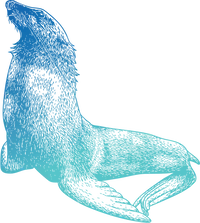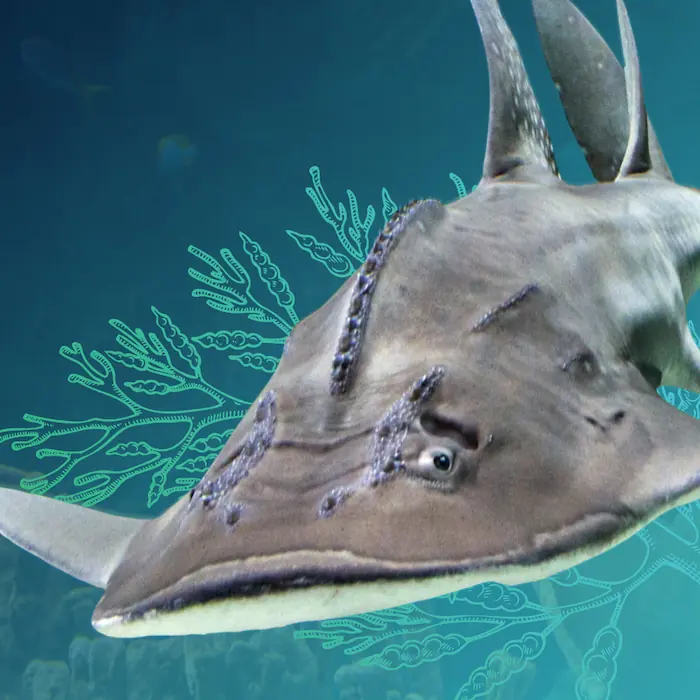Summer is here! And you’ve still got time to meet Seattle Aquarium beach naturalists on local shorelines to discover the amazing animals that live in the intertidal zone, aka where the water meets the land between high and low tide. (Check the schedule here!)
Nudibranchs are among the many fascinating creatures you may encounter on the beach at low tide. You can also get to know some nudibranch species in a number of habitats at the Seattle Aquarium.
But wait! Are you wondering, “What’s a nudibranch?” It’s a fair question. You may also be thinking, “How do I pronounce that word?” We can help with that too!
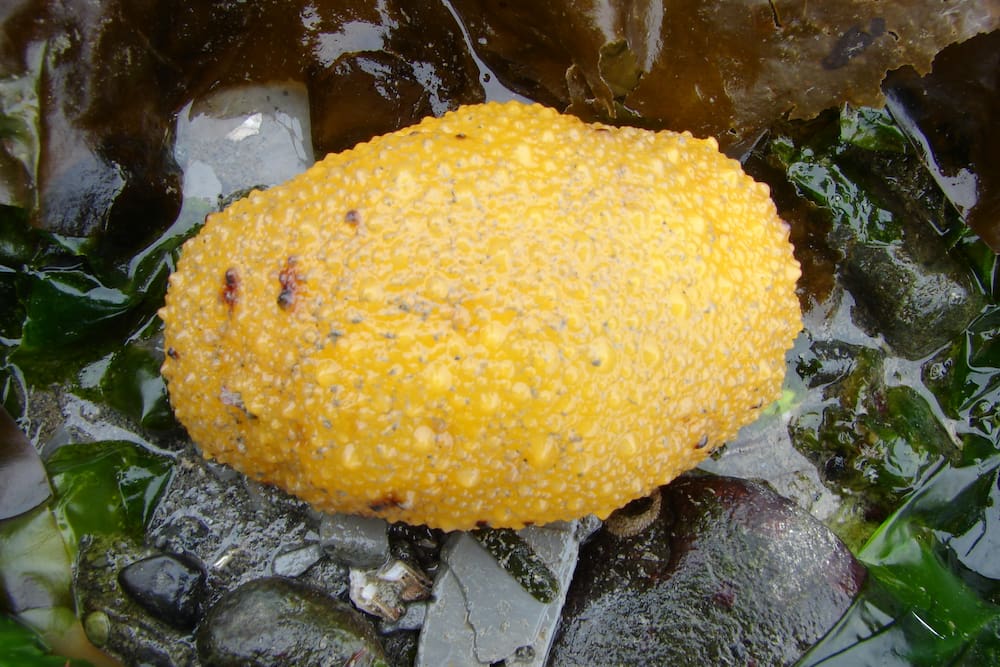
Is that a lemon nestled into the kelp? Almost! It’s a species of nudibranch called a sea lemon. It’s among the nudibranchs you can see and learn about at the Aquarium—and you may be able to spot one on a local beach at low tide as well.
Nudibranchs 101
First things first: Nudibranchs are members of the sea slug family. They’re mollusks, related to bivalves (meaning animals with two shells) like clams, mussels and oysters, as well as single-shelled animals like chitons.
But unlike those cousins, nudibranchs don’t have shells.* So you could technically think of them as naked sea slugs. After all, their name does start with the word “nude” (minus the “e”)!
All kidding aside, the name nudibranch means “naked gills.” It refers to the external gills or feathery-looking appendages that many nudibranch species display on their backs.
And how do you say their name? NEW-de-brank (with the same “a” sound as “tank”). If you’re admiring more than one of these fascinating creatures, it’s NEW-de-branks (never NEW-de-branches!).
*Well, the adults don’t. Larval nudibranchs have shells but shed them as they mature.
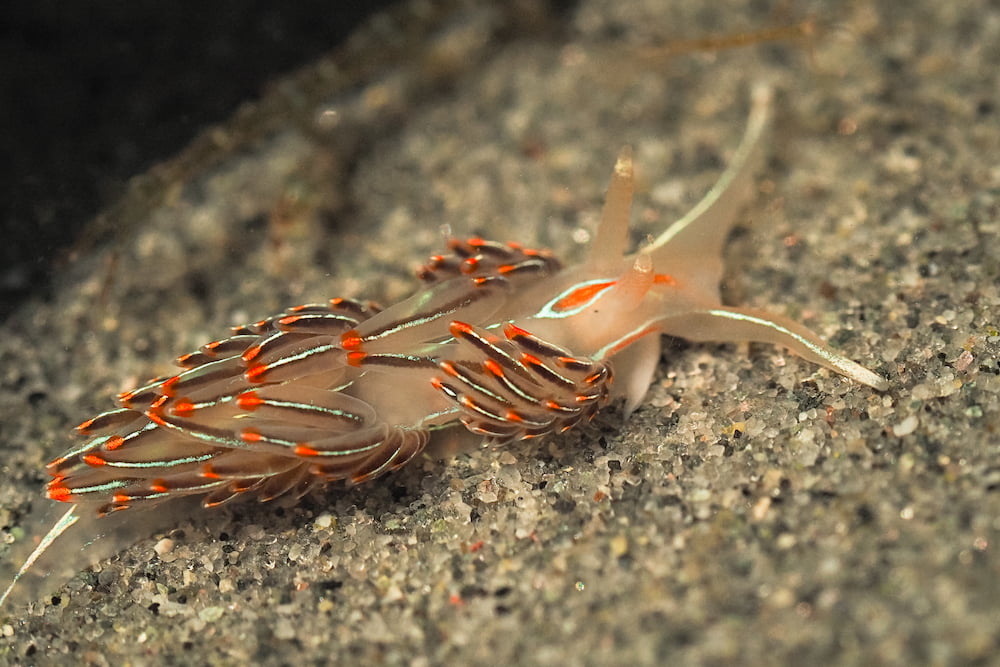
You can also get to know the opalescent nudibranch when you visit the Seattle Aquarium.
A deeper dive
Scientists estimate there are over 3,000 nudibranch species. They’re found worldwide—in cooler, temperate waters like those in Puget Sound, tropical waters like the Coral Triangle and even the frigid waters of the Arctic and Antarctica. They live at depths ranging from the intertidal zone to over 2,000 feet below the surface. And they come in incredible variety of shapes, colors and sizes, from a fraction of an inch to about the size of a football.
That’s a lot of differences! But the majority of nudibranch species share some common characteristics—in addition to the soft bodies, lack of shells and external gills that inspired their common name, that is.
For one, most nudibranchs have a pair of sensory tentacles on their heads, called rhinophores, that help them detect chemicals in the waters (similar to how your nose helps you detect odors in the air). They’re carnivores, preying on animals including sponges, barnacles, anemones—even other nudibranchs! And they have both male and female reproductive organs.
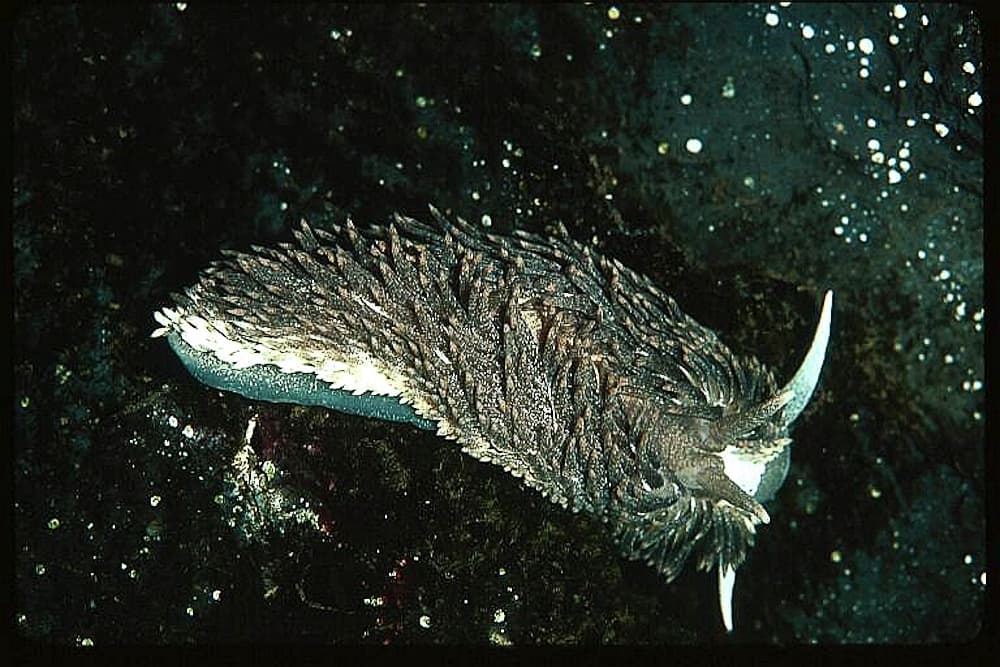
It’s easy to see why the common name for this nudibranch species is “shaggy mouse!”
See for yourself—and lend a helping hand
There’s much more to learn and love about nudibranchs, and the Seattle Aquarium is a great place to start. You can chat with our volunteer naturalists on the beach this summer or visit the Aquarium to strike up a conservation with one of our knowledgeable interpreters—just look for the folks in blue shirts!
And, no matter how far away you are from the ocean, you can make a difference for the animals that live there, including nudibranchs. A few ideas: Contact your legislators to urge support for legislation that protects ocean health. Use public transportation, fly less and limit your use of single-use plastics. Looking for other ideas? Volunteer naturalists on the beach and interpreters at the Aquarium are a great source for those too! You can also check out our act for the ocean webpage.
